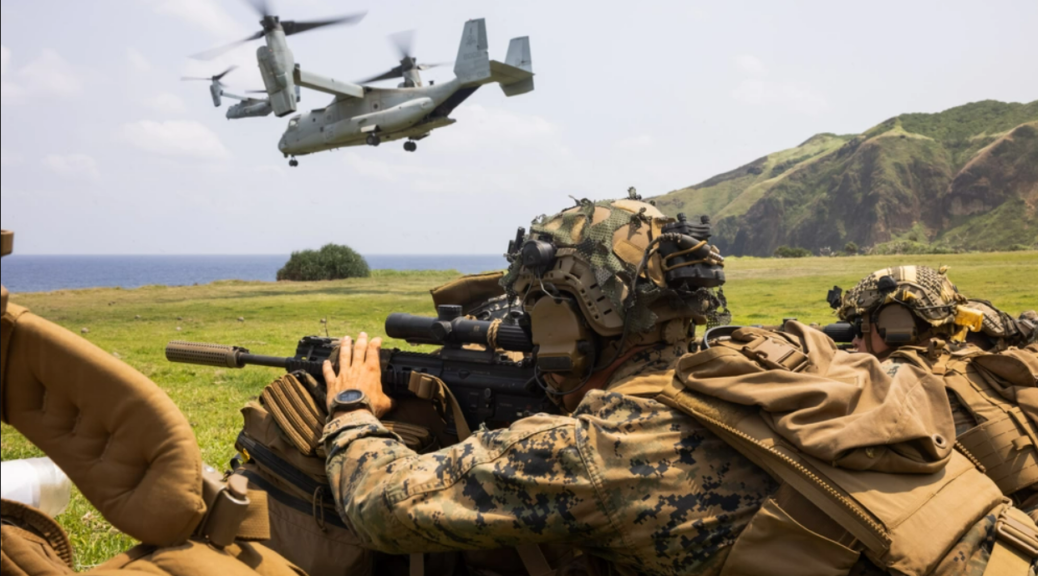By Robbin Laird
I am publishing a book later this year forcused on the paradigm shift in maritime operations. For this paradigm shift, the U.S. must get beyond a primary focus on the thirty-year shipbuilding plan.
While the U.S. Navy and its allies focus on distributed capital ship operations, there is a growing significance of delivering distributed maritime effects, which may or may not need the capital ship.
In either case, DMO for capital ships or DMO in terms of distributed maritime effects, logistical support is crucial, but is not the same in each case.
The first relies heavily on the Maritime Selaift Command whereas the second relies on airpower and innovations in new ways in how seaborne support can be provided. And in the latter case how airpower and maritime autonomous systems can be combined to provide both for the insertion and support of the forces providing for distributed maritime effects.
A recent piece by Brian Kerg on the Center for International Maritime Security website provided a ground forces perspective on delivering distributed maritime effects to provide means to provide for the significant shortfall in U.S. maritime combat capability.
“The U.S. cannot afford to wait decades to conventionally offset the military advantage of China at sea and protect its interests. Instead, the U.S. can quickly regain advantage asymmetrically by putting the right fit of combat credible military power at key maritime terrain now.
“While it may take the U.S. years to build a single ship, it can raise, man, and equip ground forces optimized for operations on key maritime terrain at the speed of relevance, raising minimally required forces in under a year.
“Such forces, once raised, can achieve asymmetric and decisive strategic deterrent effects through permanent deployment to decisive points within the territory of U.S. allies such as Japan and the Philippines, and partners such as Taiwan.”
The photo accompanying the article highlights the importance of airpower in inserting the force. But how to logistically sustain the force or move the force rapidly?
In addition to the Osprey, the Marines have access to a new combat capability, namely the CH-53K which can deliver significant supply loads including munitions at the point of need.
And these two aircraft can be assisted by the coming of maritime autonomous systems as well in providing a combined arms approach to logistical support, including movement of the insertion force to different locations supporting maritime operations.
In short, it is not just abouit capital ships.
With the need to increase maritime combat rapidly, airpower and introducing maritime autonomous systems are key capabilities which rely on different supply chains and are built more rapidly than capital ships.
There is a clear ned for a comprehensive strategy for enhanced maritime operational capability which combines consideration for new capital ships for DMO as well as new ways to insert and support distributed maritime effects.
See also, the following:
The Launch Point: Why a Combined Arms Operation with Maritime Autonomous Systems?
Optimizing for the Contested Logistics Mission: The Role of Maritime Autonomous Systems


